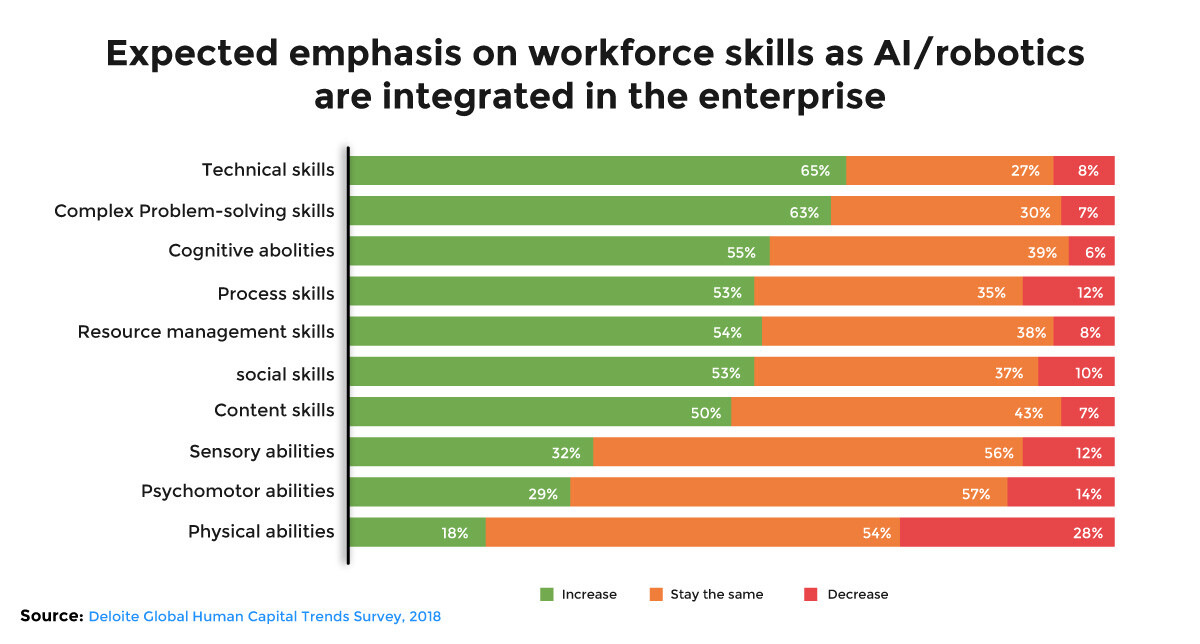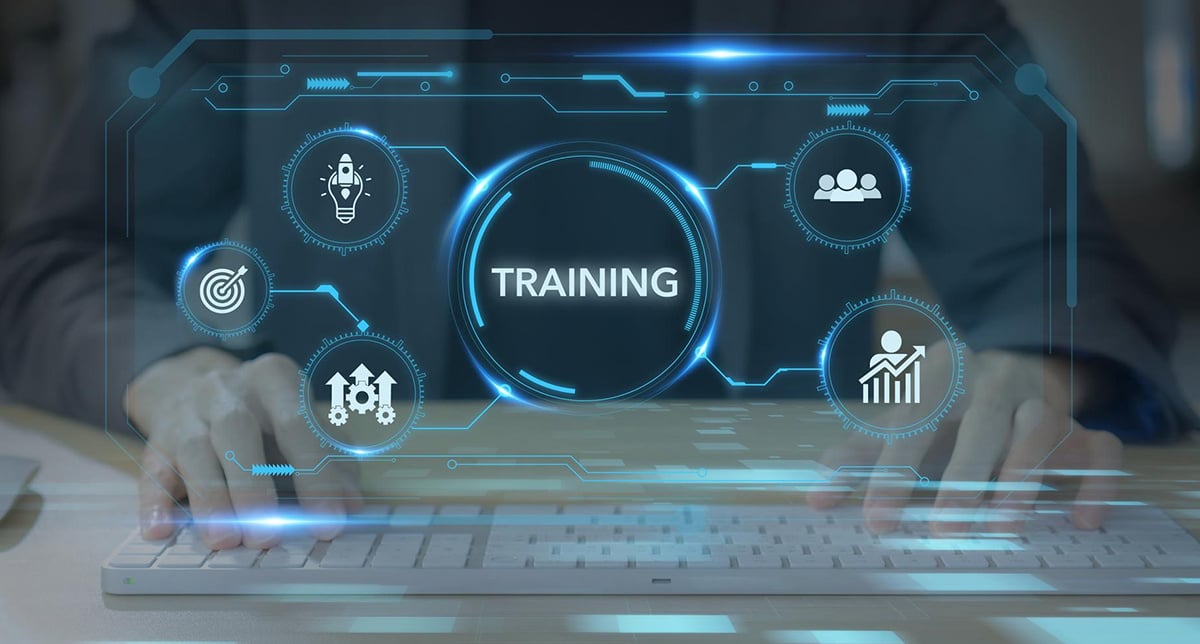The 2018 Deloitte Human Capital Trends report handed learning and development organizations a big challenge. Contrary to the view of the doomsayers in the press, the rapid adoption of artificial intelligence, robotics, and automation in the workplace creates jobs and tremendous demand for uniquely human skills.
The Real Skills Shortage
Technical skills top the list, but Deloitte says these only encompass a small part of the workforce. Human skills and the ability to work with machines are essential to our digitized future. Computers can't I think, but they can compute and complete tasks at a speed that humans can’t touch. Together, we and our machines are an unbeatable combination.

Deloitte reported a readiness gap, with 72% of respondents saying AI at their companies is essential, but only 31% agree they are ready to address it. However, the barriers may be lower than they think. This challenge finds L&D scrambling, but we now have new tools and methods that enable us to deliver learning in personalized, meaningful ways in the flow of work.
Adaptive Learning Has Come to L&D
For decades, L&D worked on the principle of learning styles. You reach your entire audience if you only design learning for each style.
It didn't go well. The truth is that we all use many ways to learn, often simultaneously.
The next wave over the past decade has been personalized learning, where we attempted to discern the learning needs of the individual through assessments, then group them and provide learning paths for each group. The problem is that it's not personalized when you put people in groups.
However, the need for personalized learning sets us on a path toward developing the mechanisms that frame the next wave of learning. The ability to conduct assessments at any point in e-learning gives us information to branch learning paths according to performance in a learning module. We can develop modular, bite-sized learning that we can use in different combinations according to the results of the assessments.
Heuristics and Adaptive Learning with AI
Content and platform providers are leading the way with adaptive learning, which harnesses heuristic analytical models to adapt learning on the fly, a process greatly enhanced by AI.
Heuristics are a type of algorithm, but they differ from standard algorithms in a fundamental way that makes them ideal for learning. At its most basic, an algorithm is predictable and deterministic, built to deliver a correct answer. A heuristic helps you look for an answer.
One example is the way Duolingo teaches gender pronouns in Spanish. It may give you a statement with correct gender subjects, verbs, and objects, and ask for a missing pronoun. If you answer correctly, it takes you to the next question. If you answer incorrectly, the application tells you how to determine the correct gender and presents the same scenario later in a different form.
In learning, we can adapt those heuristic techniques to on-the-job scenarios that require the learner to assess a situation and think it through. The requirement is for the learner to perform the correct behavior, not merely regurgitate an answer.
Barriers to AI in Learning have Come Down
The obstacles to making this work for most organizations have been the ability to handle the vast amounts of data multiple assessments create, and the expertise to build the algorithms and heuristic models to analyze the data and adapt the learning path in real time.
Two trends are overcoming this barrier. One is the advances in consumer marketing that deliver unique experiences to each of us. Online content providers like Amazon Prime and Netflix offer ever-changing recommendations according to viewing history.
Another good example is online language learning platforms like Babbel and Duolingo. These platforms deliver short modules consisting entirely of problems to solve. Each problem is an assessment. There is no list of grammar rules or definitions you learn as you go.
The good news is that large companies like Google and Amazon freely share their discoveries in AI and analytics with others.
The second trend is the growth of available expertise. Thousands of people and hundreds of technology providers have geared up to provide services, and the competition is driving costs down.
Adapt to the New Way of Learning
The path to adaptive learning has its challenges. It will require the development of a more granular approach to modular learning. You won't have to become an AI expert; you must learn to talk to one. It will require the support of your C-Suite and the entire organization. However, once you develop the capability to deliver adaptive learning, you will find yourself on the path to developing a genuinely agile organization.
Phenom eCloud is a comprehensive technology solutions provider committed to empowering businesses to overcome challenges, enhance their workforce capabilities, and achieve superior outcomes.


Leave a Comment